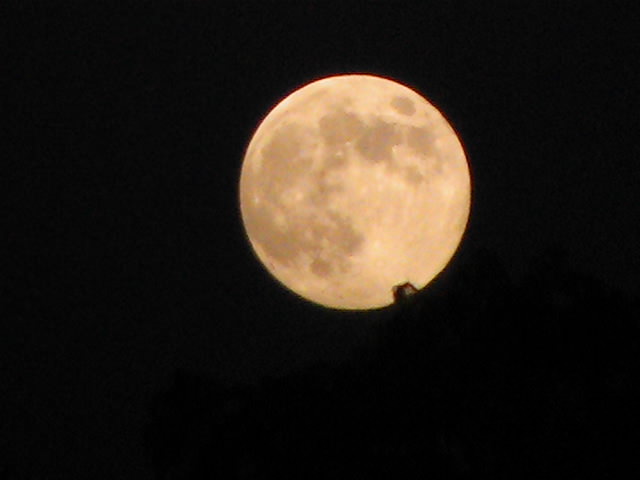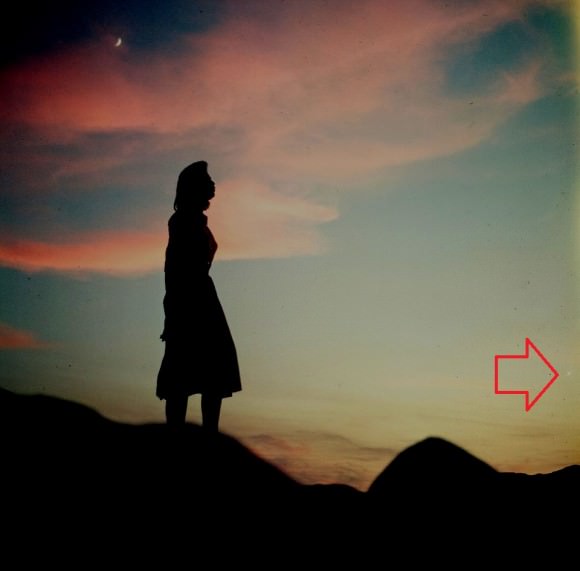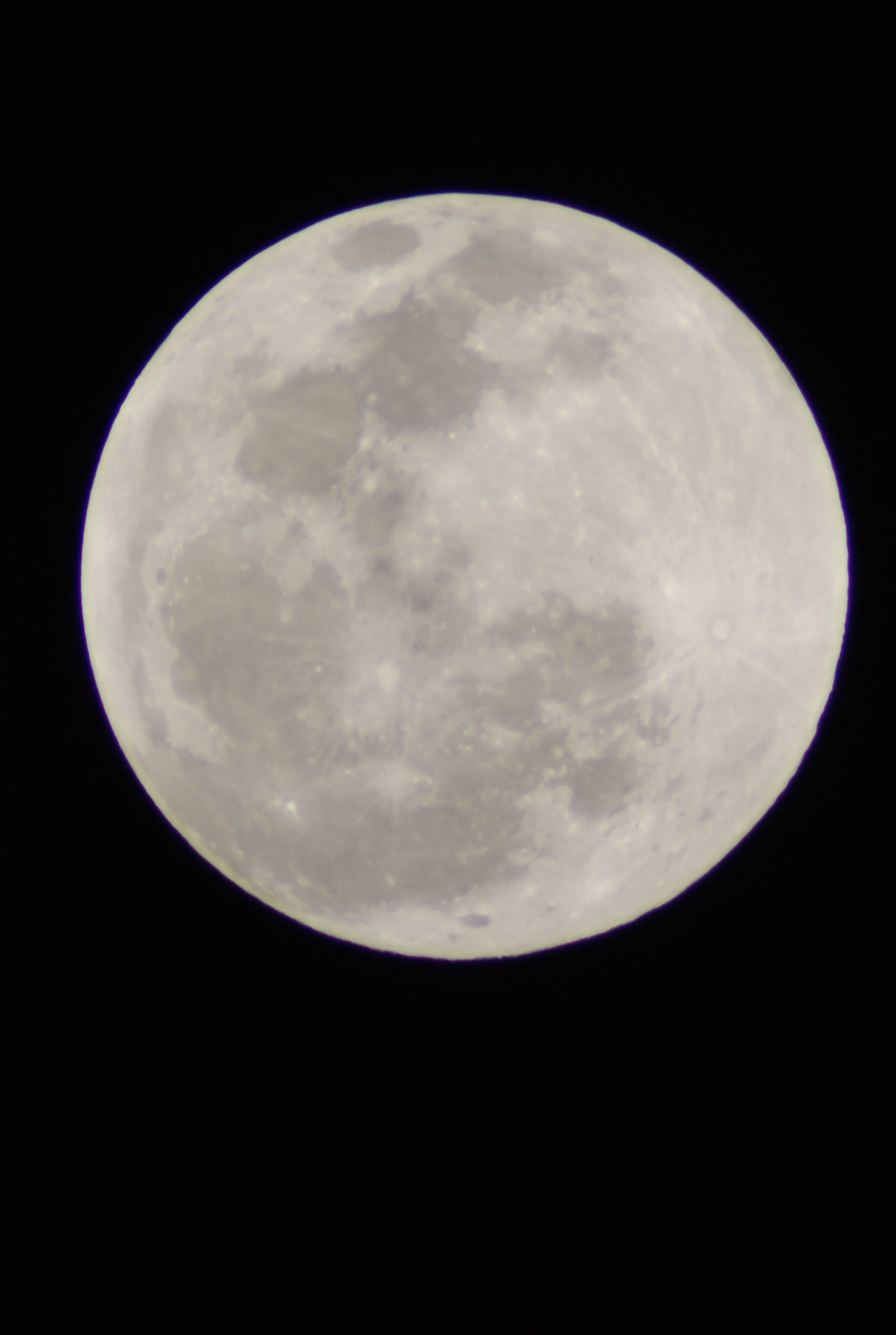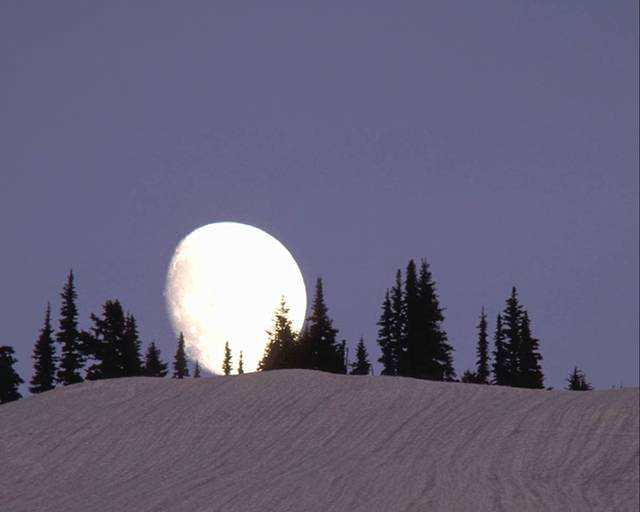Following the Moon lately? The up and coming Full Moon is the most famous of them all, as we approach the Harvest Moon for 2018. Continue reading “Heralding the 2018 Harvest Moon”
A Minor Lunar Standstill for 2015
Think you know the Moon? Whether you love our natural neighbor in space for the lunar and solar eclipses it provides, or you simply decide to ‘pack it in’ from deep sky observing on the weeks bookending Full phase — per chance to catch up on image processing — the Moon has provided humanity with a fine crash course in Celestial Mechanics 101.
Take the Moon’s path in the Fall of 2015 as a peculiar case in point. In fact, we’re nearing what’s known as a minor lunar standstill over the next lunation, the first of the 21st century.
The term lunar standstill is kind of a misnomer. The Moon will continue in its orbit around the Earth like it always does. What’s interesting to note, however, is how shallow the apparent path of the Moon currently is with respect to the ecliptic this year. A technical lunar standstill – the point at which the Moon seems to reverse course from north to south and vice versa – occurs twice a lunation… but not all lunar standstills are created equal.
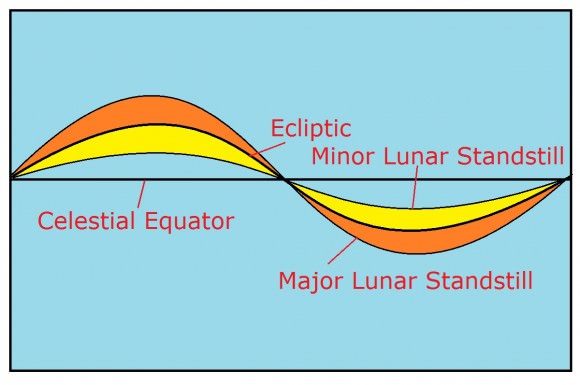
The approximately five degree tilt of the Moon’s path around the Earth with respect to the path of the Earth around the Sun assures that the Moon can actually appear anywhere from 23.5 degrees (the tilt of the Earth’s axis with respect to the ecliptic) plus five degrees above or below the celestial equator, or 28.5 degrees declination north to south.
Such a ‘hilly year’ happens once every 18.6 years, and last occurred in 2006, and won’t take place again until 2025. This orbital phenomenon also results in what’s known as a ‘long nights moon’ when the Full Moon nearest the winter solstice rides high in the sky near the spot the summer Sun occupied six months earlier, and will do so again six months hence.
To quote Game of Thrones: “Winter is coming,” indeed.

Such is the wacky orbit of the Moon. Unlike the majority of natural satellites in the solar system, the inclination of the Moon’s orbit is not fixed in relation to its host planet’s (in this case, the Earth’s) equator, but instead, to the plane of its path around the Sun, that imaginary line known as the ecliptic. Hence, we say the Moon’s path is either steep and ‘hilly’ near a major lunar standstill, or shallow and almost flat-lined, like this year. In between years are sometimes termed ‘ecliptic-like’ and happen between standstills once every 9.3 years.
Why are the nodes of the ecliptic changing? The chief culprit is the gravitational pull of the Sun, which drags the nodes opposite in the Moon’s direction of travel once around full circle every 18.6 years. To confound things even more, the Moon’s line of apsides (the imaginary line bisecting its orbit from apogee to perigee) is moving in the opposite direction and completes one revolution every 8.85 years.
This also means that the Moon can wander off the beaten trail of the zodiac constellations well worn by the classical planets. The Moon can actually transit 18 constellations: the 12 familiar zodiacal constellations, plus Orion, Ophiuchus, Sextans, Corvus, Auriga and Cetus.
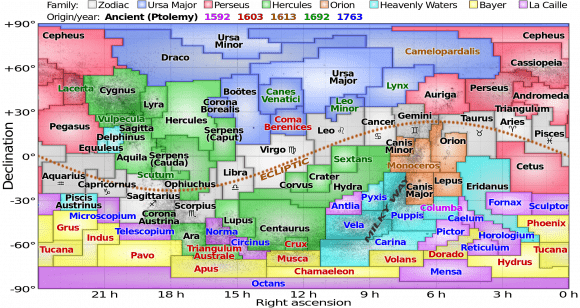
This, along with the 26,000 plus year precession of the equinoxes, also means that the stars the Moon can occult along its path are slowly changing as well.
There’s lots of evidence to suggest that ancient astronomers knew something of the cycle of lunar standstills as well. The modern term comes from archaeologist Alexander Thom’s 1971 book Megalithic Lunar Observatories. There is evidence to suggest Bronze Age cultures in the United Kingdom took note of the changing path of the Moon. The famous ‘Sun dagger’ rock alignment of Fajada Butte in Chaco Canyon, New Mexico may have also doubled as a similar sort of calendar that not only marked the yearly solstices and equinoxes, but longer periods of the cycles of the Moon as well.
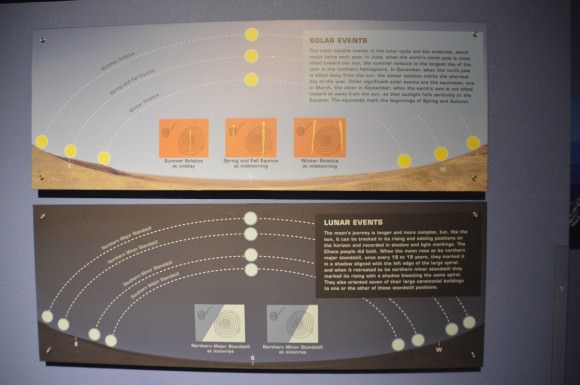
Knowing the gear clock tick of the heavens gave cultures an edge, allowing them to predict when to sow, reap, hunt and prepare for the onset of winter.
The 2015 minor lunar standstill also impacts this years’ Full Harvest Moon as well. Ordinarily on most years, the evening angle of the ecliptic versus the eastern horizon near the autumnal equinox conspires to make the Moon seem to ‘freeze’ in its nightly path, rising scant minutes later on successive evenings. This effect is most dramatic as seen from mid-northern latitudes in September on years around the major lunar standstill.
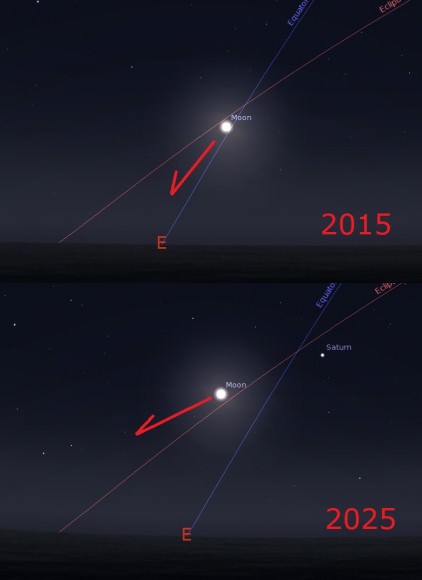
Not so in 2015. The Full Harvest Moon occurs on September 28th at 2:50 UT (10:50 PM EDT on the evening of the 27th) about four and half days after the autumnal equinox. As seen from latitude 40 degrees north, however, the Moon will rise nearly 40 minutes later each successive evening. Check out these Moonrise times as seen from the U.S. capital near 39 degrees north latitude:
Washington D.C.
Sept 25th 5:28 PM
Sept 26th 6:09 PM
Sept 27th 6:49 PM
Sept 28th: 7:29 PM
Sept 29th: 8:11 PM
As you can see, the minor lunar standstill of 2015 ameliorates the usual impact of the Harvest Moon… though we do have the final total lunar eclipse of 2015 to compensate.
More on that to come next week!
A Thrift Store Find Yields an Astronomical Mystery
A good mystery is often where you find it. Photographer Meagan Abell recently made a discovery during a thrift store expedition that not only set the internet abuzz, but also contains an interesting astronomical dimension as well. This is an instance where observational astronomy may play a key role in pinning down a date, and we’d like to put this story before the Universe Today community for further insight and consideration.
Meagan first discovered the set of four medium format negatives at a thrift store on Hull Street in Richmond, Virginia. Beyond that, they have no provenance. Meagan was amazed at what see saw when she scanned in the negatives: the images of a woman walking into the surf have an ethereal beauty all their own. Obviously the work of a skilled photographer, the photos appear to date from the late 1940s or 1950s.
Meagan turned to social media for help, and cyber-sleuths responded in a big way. #FindTheGirlsOnTheNegatives became a viral hit, but thus far, who the women in the images are and the story behind them remains a mystery.
We do know one tantalizing bit of information: several Facebook users have pinned down the location as Dockweiler Beach, California near Los Angeles International Airport. Keen-eyed observers noted the similarity of the outline of the distant hills seen to the north in one of the images.

A few things caught our eye upon reading the mystery of the girls in the negatives this past weekend. One shot clearly shows the notch of the Sun just below the twilight horizon. A second, even more intriguing image shows a tiny sliver of Moon just to the subject’s upper left.
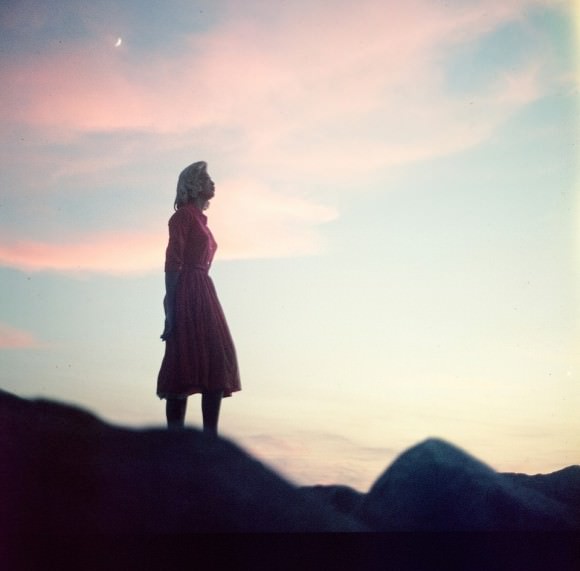
Could a date, or set of dates, be estimated based on these factors alone?
Let’s slip into astro-detective mode now. A few things are obvious right off the bat. First, the Moon is a waxing crescent, meaning the shots would have to be set in the evening. This also lends credence to the ocean being the Pacific, because the sunset is occurring over water. The similarity in cloud formations across all of the images seen also strongly suggests the photographer took all of the pictures on the same evening, during one session.
Can that crescent Moon tell us anything? It’s tiny and indistinct, but we have a few things to go on. The Moon looks to be a 5-6 day old waxing crescent about 30-40% illuminated. Not all waxing crescent Moons are created equal, as the ‘horns of the Moon’ can point in various directions based on the angle of the ecliptic to the local horizon at different times of the year.
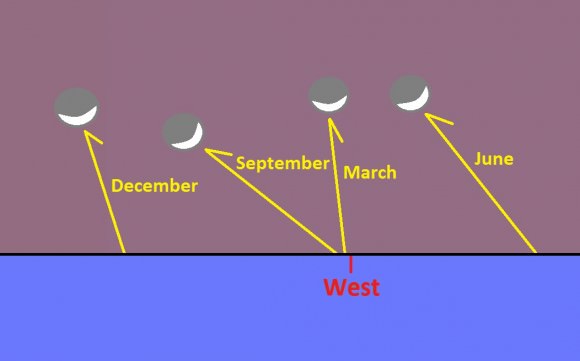
The horns of the Moon appear to be oriented about 35 degrees from horizontal. Assuming the subject in the red dress is elevated slightly and about 20 feet from the observer, the Moon would be about 25-30 degrees above the horizon in the shot.
Now, Dockweiler Beach is located at latitude 33 degrees 55’ 20” north, longitude 118 degrees 26’ 3” west. The beach itself faces a perpendicular azimuth of 240 degrees out to sea, or roughly WSW.
Already, we can rule out winter and spring, because of the unfavorable angle of the dusk ecliptic. We want a time of year with A) a shallow southward ecliptic and B) a sunset roughly due west.
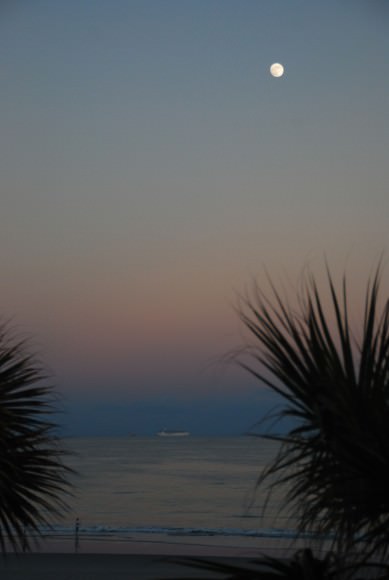
Turns out, late July through early October fit these ideal conditions for the location.
Can we narrow this even further? Well, here’s one possibility. Remember, this next step is what gumshoe PIs call a ‘hunch’…
The motion of the Moon is a wonderfully complicated affair. The path of the Moon is inclined about five degrees relative to the ecliptic, meaning that the Moon can ride anywhere from declination 28 degrees south, to 28 degrees north. From latitude 34 degrees north, this puts the mid-July ecliptic at about 33 degrees elevation across the meridian at sunset.
The nodal points where the path of the Moon crosses the ecliptic also precess slowly around the celestial sphere. This motion completes one revolution every 18.6 years, meaning that the Moon reaches those maximum declination values (sometimes referred to as a ‘long nights’ or the Major Lunar Standstill of the Moon) just under once every 19 years.
This occurred last in 2006, and will occur next in 2025. Incidentally, we’re at a shallow mid-point (known as a Minor Lunar Standstill) between the two dates this coming Fall.
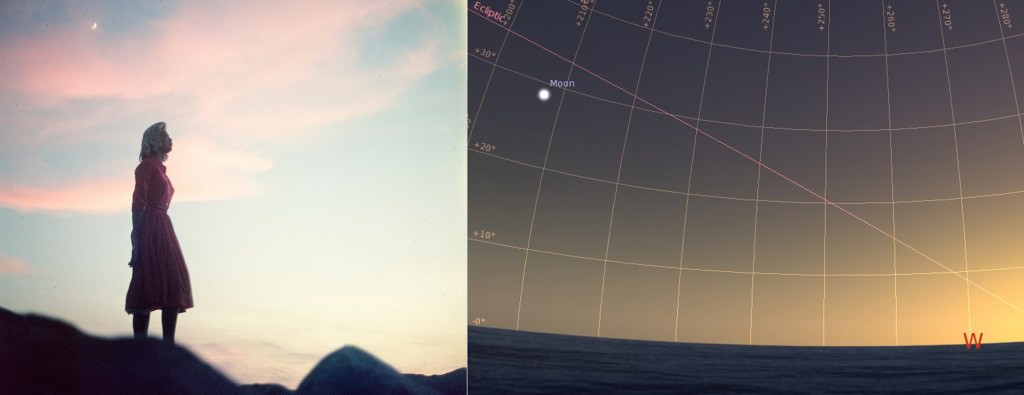
This also puts the late summer 1st quarter Moon as far south ‘in the weeds’ as possible. Extrapolating back in time, this sort of wide-ranging Moon occurred around 1949. Looking at the celestial scene in Stellarium, three dates nail the horn angle and elevation of the Moon seen in the photograph pretty closely around this time:
-August 11th, 1948
-August 29th, 1949
-August 19th, 1950
Of course, this is just a hunch. Perhaps the subject was standing on a westward facing spit of rocks. Or maybe the photographer was closer or farther away than estimated. Or maybe the negative was inverted left to right along the way… that’s why I’d like to invite, you, the astute sky watcher, to weigh in.
And even if we pinned down the date, the mystery remains. Who are the girls in the negatives? What became of the photo shoot? And how did the negatives end up in a thrift store in Virginia?
Read another astronomical mystery sleuthed out by Dave Dickinson, with The Downing of Spirit ‘03: Did the Moon Play a Role?
Update: an sharp-eyed reader noticed that if you boost the contrast, you can see an additional ‘speck’ in the Moon image (see comment discussion below):
Update: Meagan responds: “The object along the horizon in the crescent Moon image is actually just a transparency defect.” A second image from the same strip does not show the white speck (arrowed above) near the horizon.
Tonight: The Rise of the 2013 “Mini-Moon”
The final Full Moon of 2013 occurs tonight, and along with it comes something special: the most distant and visually smallest Full Moon of 2013.
Why doesn’t the annual “mini-moon” receive the same fanfare and hype that the yearly perigee – or do you say Proxigean to be uber-obscure – “supermoon” does? The smallest Full Moon of the year does appear to have a public relations problem in this regard. But as you’ll see, the circumstances for this week’s Full Moon are no less fascinating.
The exact timing of tonight’s Full Moon occurs at 4:28 AM EST/9:28 Universal Time (UT) on Tuesday, December 17th. This occurs just two days and 14 hours prior to the Moon reaching apogee on December 19th at 6:50PM EST/23:50 UT at 406,267 kilometres distant. This is one of the three most distant apogees of 2013, and the closest to Full for the year. It’s also with 500 kilometres of the most distant apogee than can occur, as the Moon’s apogee can vary between ~404,000 and 406,700 kilometres distant.
Tonight’s Full Moon will have an apparent angular diameter of around 29.8’ arc minutes, just a shade lower than the usual value quoted of around half a degree or 30’. The visual size of the Moon as seen from the Earth varies about 12% from 34.1’ to 29.3’. Also, the Moon is also about half an Earth radius more distant when it’s on the local horizon versus at the zenith overhead!
This is also the closest Full Moon to the December solstice, which occurs four days later on Saturday, December 21st at 12:11 PM EST/17:11 UT. This marks the start of astronomical summer in the southern hemisphere and the beginning of the winter season in the north. Think of tonight’s Full Moon as a sort of “placeholder,” marking the point at which the Sun will occupy during the June solstice on the Gemini-Taurus border.
This all means that tonight’s Full Moon rides high for northern hemisphere residents towards local midnight. But the “Long Night’s Moon” of 2013 is rather lackluster in terms of declination. While it’s the northernmost Full Moon of 2013 at a declination of +18.7 degrees, it’s a far cry from the maximum declination of +28.72 degrees (the angle of the ecliptic plus the tilt of the Moon’s orbit) that it can achieve. This only occurs every 18.6 years and last occurred in 2006 and will happen again around 2025. We’re currently headed towards a shallow minimum for the Moon’s orbit in 2015. Ancient European and Native American cultures both knew of this cycle of high-flying moons.
Not weird enough? The next “most distant Full Moon of the Year” happens only one lunation later on January 16th… within just 2 hours of apogee! Perhaps January’s Full Moon is due notoriety as a “Super-Mini Moon?” Such a pairing of “mini-moons” last occurred on 2004-2005 and will next occur on 2021-2022.
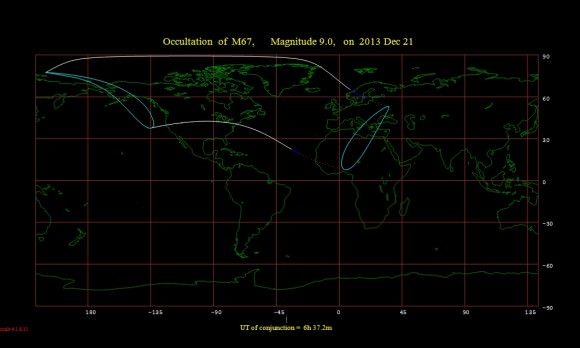
The Moon also visits some other celestial sights this week. After passing five degrees north of Jupiter on December 19th, the Moon heads towards an occultation of the open cluster M67 in the constellation Cancer on December 21st for northern North America. Though the Moon will be waning gibbous, it might just be possible to note the reappearance of the cluster on the Moon’s dark limb. Other occultations for the remainder of December by the Moon include an occultation of Spica on December 27th for northern Asia, Saturn on December 29th for Antarctica, and +3.6th magnitude star Lambda Geminorum for Canada on December 18th.
The passing of the Full Moon also means it will be entering into the morning sky, which also means bad news for viewers of the Ursid meteor shower which peaks on December 22nd and hunters of Comet C/2013 R1 Lovejoy, currently shining at +5th magnitude in the constellation Hercules low in the dawn.
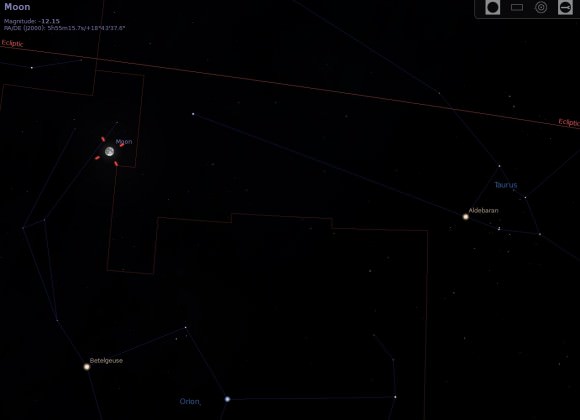
The keen-eyed may notice the Moon also transits through the northern end of the non-zodiacal constellation of Orion on Tuesday, December 17th. Did you know that the Moon can actually stray far enough away from the ecliptic to cross through 18 constellations? The Six non-zodiacal constellations it can transit are: Orion, Ophiuchus, Corvus, Sextans, Auriga and Cetus.
Other names for the December Full Moon include the Yule, Oak, and Cold Moon.
Finally, a new Earthly ambassador is now roaming the lunar surface.
China’s Chang’E-3 spacecraft landed on the Moon just outside of the Bay of Rainbows (Sinus Iridum) near Montes Recti in the northern section of the Mare Imbrium on Saturday, December 14th. The landing site is visible now on the lunar nearside, and can be seen with that new Christmas telescope you’ve been itching to try out. Look for the Sinus Iridum as a wide crescent scarp, a sort of “notch” in the top of Mare Imbrium:
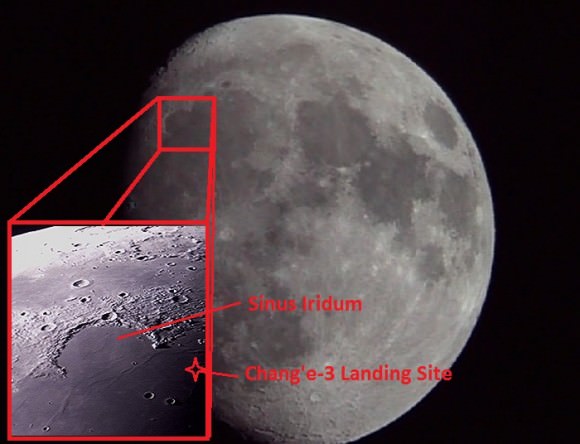
China’s Yutu or “Jade Rabbit” rover has been beaming back some splendid images of the lunar surface!
So don’t let the cold temperatures deter you from exploring the lunar surface, and the strange but fascinating motions of our nearest natural celestial neighbor. Dress warm and be sure this Christmas season to raise a glass of ye ole Nog to the Solstice/Yule Moon.
Ancient Astronomical Calendar Discovered in Scotland Predates Stonehenge by 6,000 Years
A team from the University of Birmingham recently announced an astronomical discovery in Scotland marking the beginnings of recorded time.
Announced last month in the Journal of Internet Archaeology, the Mesolithic monument consists of a series of pits near Aberdeenshire, Scotland. Estimated to date from 8,000 B.C., this 10,000 year old structure would pre-date calendars discovered in the Fertile Crescent region of the Middle East by over 5,000 years.
But this is no ordinary wall calendar.
Originally unearthed by the National Trust for Scotland in 2004, the site is designated as Warren Field near the town of Crathes. It consists of 12 pits in an arc 54 metres long that seem to correspond with 12 lunar months, plus an added correction to bring the calendar back into sync with the solar year on the date of the winter solstice.
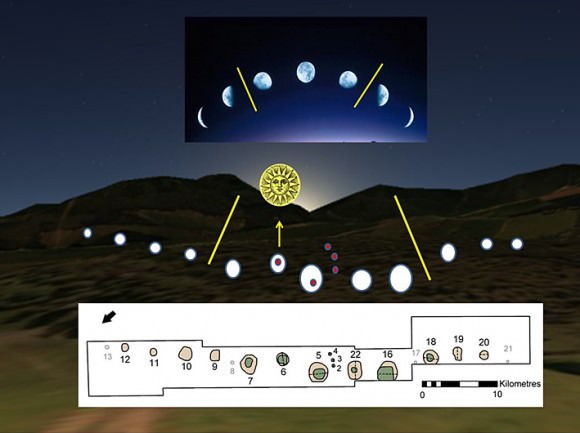
“The evidence suggests that hunter-gatherer societies in Scotland had both the need and sophistication to track time across the years, to correct for seasonal drift of the lunar year” said team leader and professor of Landscape Archaeology at the University of Birmingham Vince Gaffney.
We talked last week about the necessity of timekeeping as cultures moved from a hunter-gatherer to agrarian lifestyle. Such abilities as marking the passage of the lunar cycles or the heliacal rising of the star Sirius gave cultures the edge needed to dominate in their day.
For context, the pyramids on the plains of Giza date from around 2500 B.C., The Ice Man on display in Bolzano Italy dates from 3,300 B.C., and the end of the last Ice Age was around 20,000 to 10,000 years ago, about the time that the calendar was constructed.
“We have been taking photographs of the Scottish landscape for nearly 40 years, recording thousands of archaeological sites that would never have been detected from the ground,” said manager of Aerial projects of the Royal Commission of Aerial Survey Projects Dave Cowley. “It’s remarkable to think that our aerial survey may have helped to find the place where time was invented.”
The site at Warren Field was initially discovered during an aerial survey of the region.

The use of such a complex calendar by an ancient society also came as a revelation to researchers. Emeritus Professor of Archaeoastronomy at the University of Leicester Clive Ruggles notes that the site “represents a combination of several different cycles which can be used to track time symbolically and practically.”
The lunar synodic period, or the span of time that it takes for the Moon to return to the same phase (i.e., New-to-New, Full-to-Full, etc) is approximately 29.5 days. Many cultures used a strictly lunar-based calendar composed of 12 synodic months. The Islamic calendar is an example of this sort of timekeeping still in use today.
However, a 12 month lunar calendar also falls out of sync with our modern Gregorian calendar by 11 days (12 on leap years) per year.
The familiar Gregorian calendar is at the other extreme, a calendar that is strictly solar-based. The Gregorian calendar was introduced in 1582 and is still in use today. This reconciled the 11 minute per year difference between the Julian calendar and the mean solar year, which by the time of Pope Gregory’s reform had already caused the calendar to “drift” by 10 days since the 1st Council of Nicaea 325 AD.
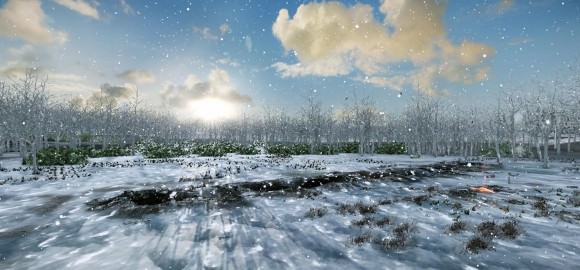
Surprisingly, the calendar discovered at Warren Field may be of a third and more complex variety, a luni-solar calendar. This employs the use of intercalary periods, also known as embolismic months to bring the lunar and solar calendar back into sync.
The modern Jewish calendar is an example of a luni-solar hybrid, which adds an extra month (known as the 2nd Adar or Adar Sheni) every 2-3 years. This will next occur in March 2014.
The Greek astronomer Meton of Athens noted in 5th century B.C. that 235 synodic periods very nearly add up to 19 years, to within a few hours. Today, this period bears his name, and is known as a metonic cycle. The Babylonian astronomers were aware of this as well, and with the discovery at Warren Field, it seems that ancient astronomers in Scotland may have been moving in this direction of advanced understanding as well.
It’s interesting to note that the site at Warren Field also predates Stonehenge, the most famous ancient structure in the United Kingdom by about 6,000 years. 10,000 years ago would have also seen the Earth’s rotational north celestial pole pointed near the +3.9th magnitude star Rukbalgethi Shemali (Tau Herculis) in the modern day constellation of Hercules. This is due to the 26,000 year wobble of our planet’s axis known as the precession of the equinoxes.

The Full Moon nearest the winter solstice also marks the “Long Nights Moon,” when the Full Moon occupies a space where the Sun resides during the summer months and rides high above the horizon for northern observers all night. The ancients knew of the five degree tilt that our Moon has in relation to the ecliptic and how it can ride exceptionally high in the sky every 18.6 years. We’re currently headed towards a ‘shallow year’ in 2015, where the Moon rides low in relation to the ecliptic. From there, the Moon’s path in the sky will get progressively higher each year, peaking again in 2024.
Who built the Warren Field ruins along the scenic Dee Valley of Scotland? What other surprises are in store as researchers excavate the site? One thing is for certain: the ancients were astute students of the sky. It’s fascinating to realize how much of our own history has yet to be told!


